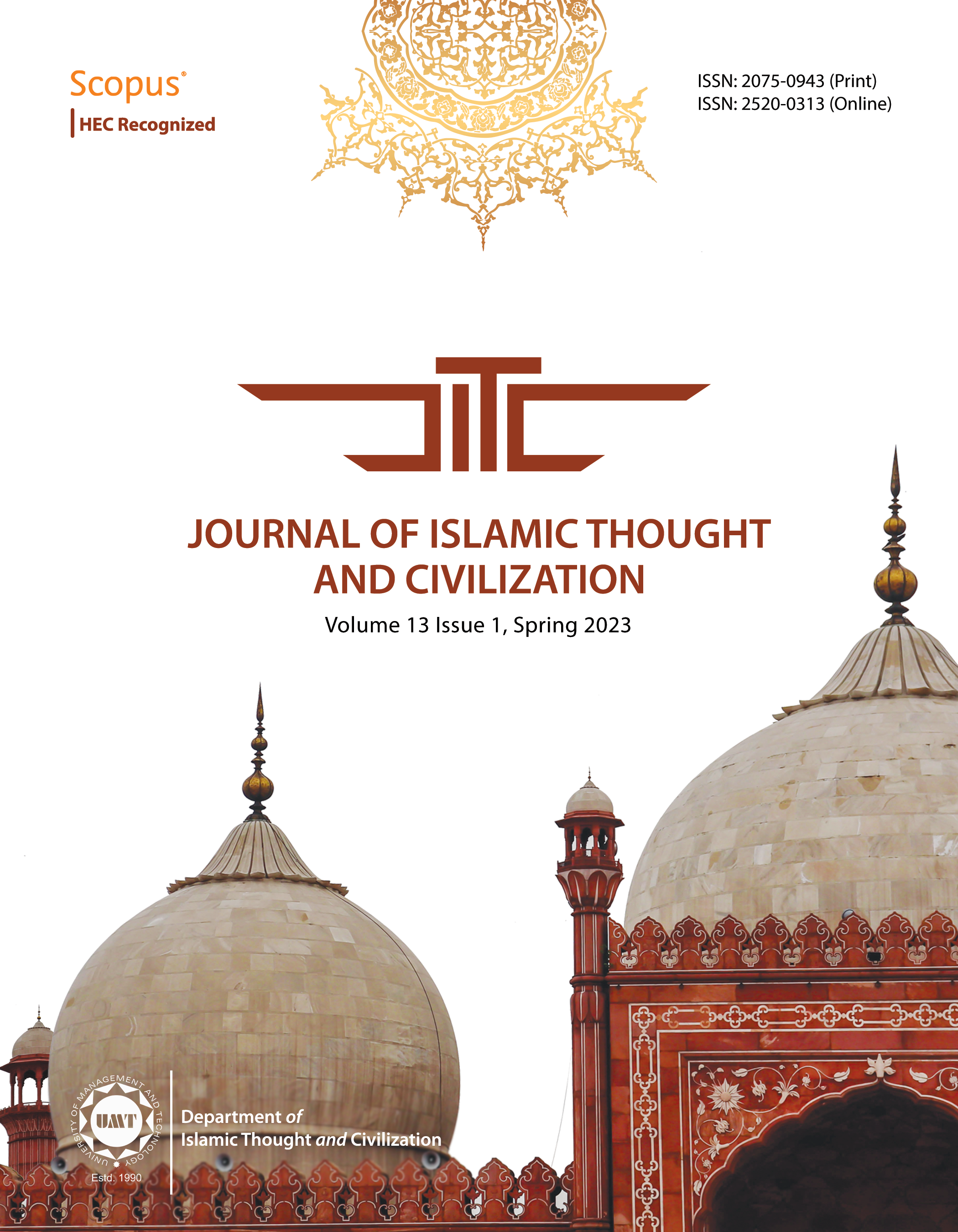Historical Evolution and Prevention of Westophobia in Muslim Societies
Abstract
 Abstract Views: 65
Abstract Views: 65
Confrontational religious, economic, and political issues have created an intolerant environment globally. The clashes between the worlds have not only disturbed and manipulated both civilizations but also illustrated the faults on the global world. Therefore, the current study aims to analyze the historical evolution of Westophobia in Muslim societies, which has evolved with the civilizations. The opportunities, which can improved the situation, are also assessed in this intellectual debate. Westophobia is a term used in civilizational discourses to refer to the fear that Muslim societies have of the Western world. Many misconceptions and media propaganda’s are strengthening the foundation of this negative attitude towards the West day by day. Different ideologies related to religious extremism and the clash of civilizations have flourished because of the biased viewpoint of people towards the Western ideology. Therefore, it is essentially important to stop this poisonous thinking in order to promote sustainable peace and religious tolerance globally. Hence, Muslims around the world face many challenges towards this fruitful activity. Generally, Islamophobia, orientalism, and imperialism have gripped the religious and political circles of the West by creating a rigid expression of the Muslim world. Therefore, the current study deployed a qualitative research methodology to present to evaluate factors influencing Westphobia.
Downloads
References
Abdel-Malek, Kamal. (2000). America in an Arab mirror: Images of America in Arabic travel literature. New York, NY: St. Martin’s Press DOI: https://doi.org/10.1057/9780230120587
Dominique Moisi, The Geopolitics of Emotions: How Cultures of Fear, Humiliation, and Hope are Reshaping the World (New York: Doubleday, 2009)
Copyright (c) 2023 Muhammad Riaz Mahmood, Mohammad Dilshad Mohabbat, Hafiz Muhammad Hammad

This work is licensed under a Creative Commons Attribution 4.0 International License.

This work is licensed under a Creative Commons Attribution 4.0 International License. Authors retain copyright and grant the journal right of first publication with the work simultaneously licensed under a Creative Commons Attribution (CC-BY) 4.0 License that allows others to share the work with an acknowledgement of the work’s authorship and initial publication in this journal.








